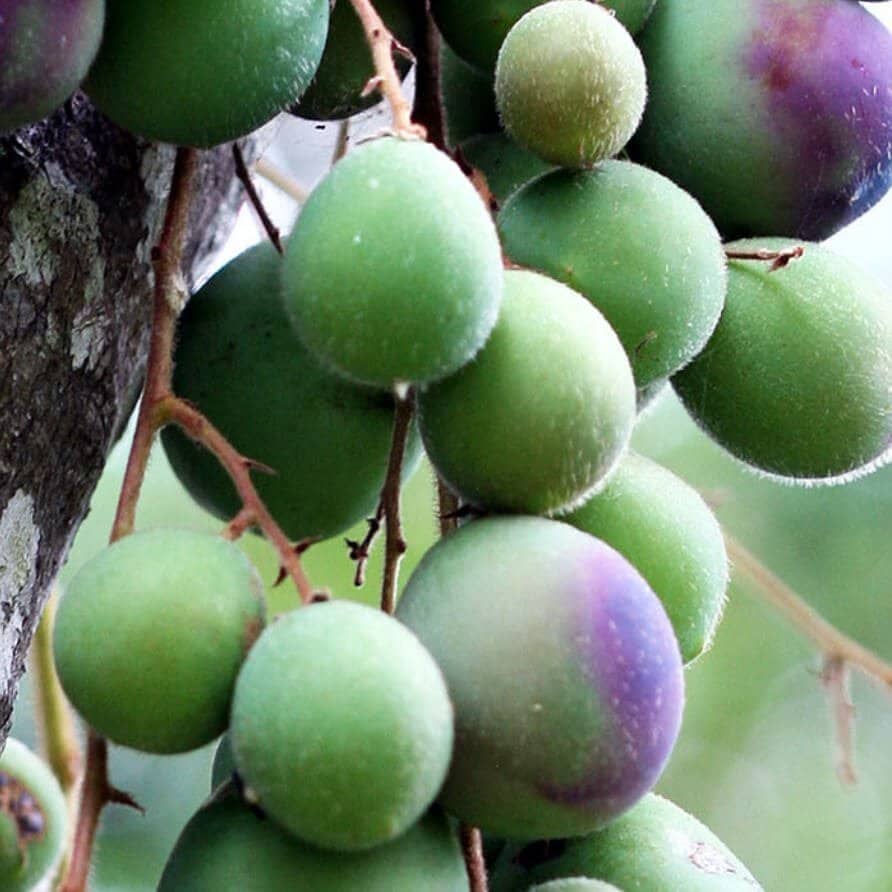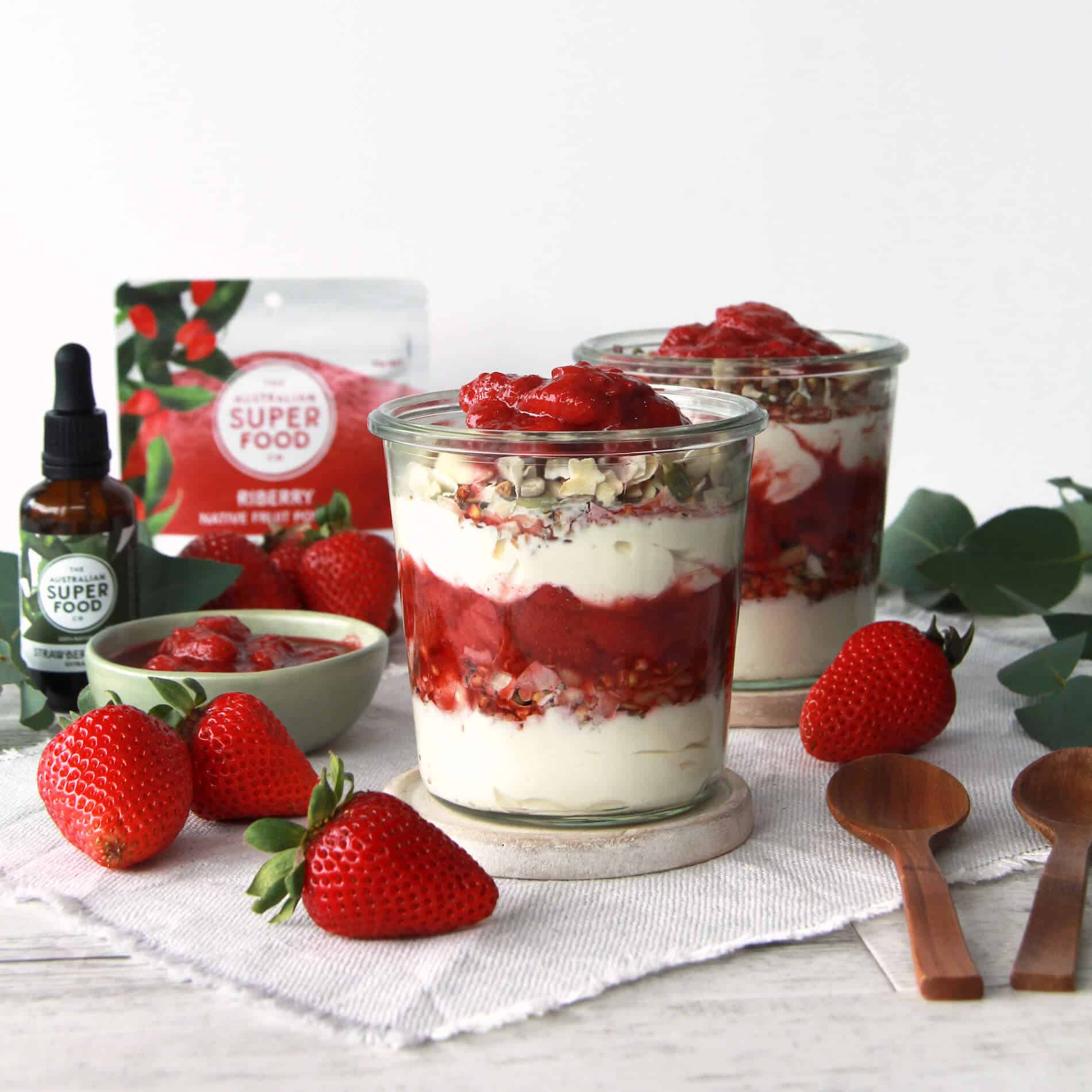The Top 10 Australian Superfoods
06/07/2015Q: What has 100 times more Vitamin C than an Orange, 5.2 times more antioxidants than a blueberry and tastes downright delicious? (Hint – it’s our #1 rated Australian superfood!)
If you’re shrugging your shoulders in bemusement, you’re not alone. Australian superfoods remain unfamiliar to most, regardless of being some of the most nutrient dense foods on the planet.
So how is it that with such a powerful group of tasty, nourishing ingredients growing in our own backyard; plants, seeds and nuts alike that sustained our Aboriginal people for over 50,000 years, we’ve managed to miss them?
In this superfood obsessed, health conscious day and age, here’s the issue – due to exotic appeal and influential media hype, it is more common for us as Aussies to opt for foreign produce over these native Australian gems that, quite frankly, overshadow many imported contenders when it comes to their dietary value. Thus, if you know how to spell Quinoa and the word Accai simply rolls off the tongue, maybe it’s time to try some more local produce.
As promised, here are the top 10 Australian superfoods…
- Bunya Bunya Nut
Kicking things off at number 10, the Bunya Bunya Nut closely resembles a Chestnut’s exceptional nutritional value as well as it’s physicality – starchy, not oily, and waxy when boiled in their shell. They are consumed raw, roasted, sliced or pureed and commonly used in spreads or milled to a (gluten-free) flour.
- Lemon Aspen
Next up, Lemon Aspen, which dispenses a tropical citrus aroma and possesses a strong acidic flavour of lemon and spice. As for nutritional properties, 100g of Lemon Aspen contains approximately that of the juice, zest and pulp of 6 large lemons.
- Macadamia Nut
One of our more famous Australian ingredients, did you know that Macadamias are high in fibre, calcium, iron, magnesium and zinc, and are useful in aiding metabolic functioning and cholesterol levels? They are commonly used for their golden oil that is regarded as one of the healthiest edible oils in the world when cold pressed.
- Wattleseed
With exceptionally tough husks, when Wattleseeds fall from their branch they survive Australia’s harsh natural climate for up to 20 years. Accordingly, the seed’s nutritional value mirrors these powerful properties, being a rich source of protein and carbohydrate and concentrated with potassium, calcium, iron, zinc and fibre. Compatible with chocolate and desserts, it’s also ground into flour or roasted to produce a nutty, coffee aroma.
- Lemon Myrtle
Can we tempt you with something intoxicating and refreshing? Lemon Myrtle is a powerful antioxidant and antiseptic, a vegan source of calcium, high in folate, Vitamin A and Vitamin E, and is the most concentrated source of plant citral in the world. It can be consumed in beverages (tea) or added to a recipe (sweet or savoury) for some extra zest, the leaf itself being citrusy whilst not acidic.
- Riberry
Number 5 brings us a rich, spicy, Cranberry-like flavour. Riberry has three times the folate of a blueberry, is a concentrated source of essential minerals and is useful in aiding the immune system. Commonly used in chutneys, sauces, salads, cheese platters, vegetable dishes and desserts.
- Finger Lime
Three times the Vitamin C found in a Mandarin, Finger Lime is not only a substantial source of folate, potassium and Vitamin E, but contains considerable antiseptic properties. Zesty and citrusy, it goes down a treat in dressings, sauces and jams or as a garnish.
- Quandong
Fun to say, and oh so yummy. Raw or dried, Aborigines would use Quandong as a substitute for meat. 25% protein, 70% complex oils and high in vitamin C, it’s also highly valued for its medical properties. Salty and sour, it is commonly used in jams, chutneys, desserts and pies.
- Davidson Plum
With the capacity to reduce hypertension and obesity, it’s astounding how underutilised this crimson fruit really is. High in potassium, calcium, Vitamin E, zinc and antioxidants, it’s equally used as medicine as it is food. Davidson Plum is sweet and sour in taste and a useful ingredient in beverages, sauces, dry red wine, desserts or simply as a natural food colorant.
- Kakadu Plum
Coming in at number one (and the answer to our trivia above), Kakadu Plum is already making a name for itself due to its incomparable nutritional make-up and unique, thirst quenching flavour. Commonly used in powdered form in shakes and smoothies as a health supplement, the fruit is comprised of antibacterial, antifungal and antiviral agents, strong doses of iron, Vitamin E and folate and possesses the highest Vitamin C concentration on Earth!
So, anything tickle your fancy? Taste some of these delights in our natural Raw Bars or Freeze Dried Fruits or be inspired in the kitchen by our Australian superfood recipe creations.
Nutrition










